Tuberculosis (TB) is one of the oldest and most serious infectious diseases in human history. Despite medical advancements, it continues to be a major global health concern, especially in developing countries. In this comprehensive guide, we explore what is tuberculosis, its symptoms, causes, types, diagnosis, treatment options, and prevention methods.
Introduction to Tuberculosis
Tuberculosis (TB) is a potentially serious infectious disease that primarily affects the lungs, but it can affect other organs too. It is caused by the bacterium Mycobacterium tuberculosis.
History of Tuberculosis
TB has been with us for millennia. It was once called “consumption” due to the way it seemed to consume people from within. The discovery of the TB bacterium in 1882 by Dr. Robert Koch marked a turning point in TB diagnosis and treatment.
What is Tuberculosis?
Tuberculosis is an infectious disease caused by Mycobacterium tuberculosis. It mainly affects the lungs (pulmonary TB), but it can also affect other parts of the body like the brain, kidneys, and spine (extrapulmonary TB).
Causes of Tuberculosis
TB is caused by a bacterial infection transmitted through airborne particles when a person with active TB coughs, sneezes, or talks. It’s not spread by touching or sharing utensils.
Types of Tuberculosis
There are several forms of TB, including:
- Pulmonary TB – Affects the lungs.
- Extrapulmonary TB – Affects organs outside the lungs.
- Latent TB – The bacteria remain dormant and cause no symptoms.
- Active TB – The bacteria multiply and cause illness.
Pulmonary vs. Extrapulmonary TB (Comparison Table)
| Feature | Pulmonary TB | Extrapulmonary TB |
|---|---|---|
| Affected Organ | Lungs | Brain, kidneys, spine, lymph nodes |
| Symptoms | Cough, chest pain, blood in sputum | Depends on the affected organ |
| Contagious? | Yes | Usually no |
| Diagnosis | Chest X-ray, sputum test | CT/MRI, biopsy |
| Common in | Adults | Children, immunocompromised |
Risk Factors
Anyone can get TB, but certain factors increase risk:
- Weakened immune system (e.g., HIV)
- Living in or traveling to TB-prevalent regions
- Healthcare work
- Smoking or substance abuse
- Malnutrition
Signs and Symptoms
Common TB symptoms include:
- Persistent cough (3+ weeks)
- Chest pain
- Coughing up blood
- Fatigue
- Weight loss
- Fever
- Night sweats
- Loss of appetite
How Tuberculosis Spreads
TB spreads through airborne droplets. Close contact with someone who has active TB increases the risk of infection.
Latent vs. Active TB
- Latent TB: No symptoms, not contagious.
- Active TB: Symptoms present, contagious.
Early detection and treatment of latent TB can prevent it from turning into active TB.
TB in Children vs. Adults (Comparison Table)
| Feature | Children | Adults |
|---|---|---|
| Symptoms | Often non-specific | Classic TB symptoms |
| Diagnosis | More difficult | Easier with sputum tests |
| Risk of Spread | Less likely | More likely |
| Disease Progression | Faster | Slower |
| Drug Resistance | Less common | More common |
Drug-Resistant Tuberculosis
Drug-resistant TB (DR-TB) occurs when the TB bacteria become resistant to standard antibiotics. Types include:
- MDR-TB: Multi-drug-resistant TB (resistant to isoniazid and rifampin)
- XDR-TB: Extensively drug-resistant TB (resistant to multiple drugs)
Diagnosis of Tuberculosis
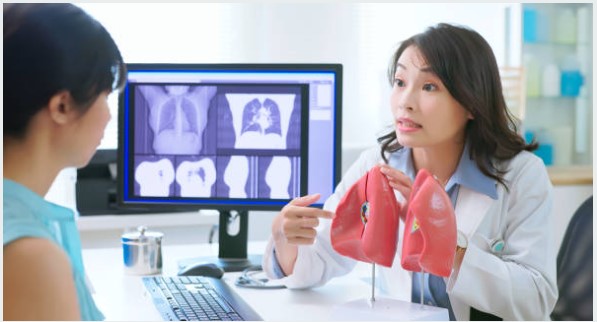
Early diagnosis is critical for treatment and preventing transmission. Doctors may use a combination of tests and imaging.
Common Diagnostic Tests
- Tuberculin Skin Test (TST)
- Interferon-Gamma Release Assays (IGRAs)
- Chest X-rays
- Sputum smear microscopy
- Nucleic Acid Amplification Tests (NAATs)
- Biopsy for extrapulmonary TB
TB and HIV Co-Infection
TB is the leading cause of death among people with HIV. Both diseases weaken the immune system, making co-infection more difficult to manage and treat.
TB Treatment Options
TB is curable with the right combination of antibiotics. The World Health Organization (WHO) recommends:
- 6-month regimen for drug-sensitive TB
- Longer regimen for drug-resistant TB
First-Line and Second-Line TB Drugs
- First-Line Drugs: Isoniazid, Rifampin, Pyrazinamide, Ethambutol
- Second-Line Drugs: Fluoroquinolones, Kanamycin, Capreomycin
Treatment Duration
- Drug-sensitive TB: 6 months
- MDR-TB: 18-24 months
- Latent TB: 3-9 months
Adherence to the full course is essential to prevent resistance.
Side Effects of TB Medications
Common side effects include:
- Nausea
- Liver toxicity
- Rash
- Joint pain
- Vision problems (Ethambutol)
TB Vaccine (BCG)
The Bacillus Calmette-Guérin (BCG) vaccine is given to infants in many countries. It offers protection against severe TB forms like meningitis but is less effective against adult pulmonary TB.
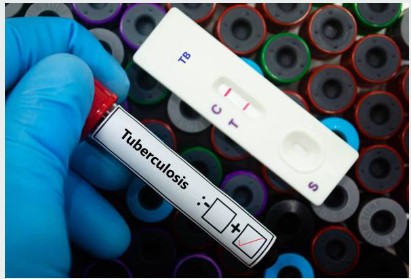
Prevention Tips
- Get tested if exposed
- Complete treatment if diagnosed
- Practice good hygiene
- Ensure proper ventilation
- Use protective masks in high-risk areas
TB and Public Health
Public health systems play a vital role in TB control by:
- Screening high-risk populations
- Monitoring drug resistance
- Promoting vaccination and awareness
Global Statistics
- 10.6 million people fell ill with TB in 2022
- 1.3 million deaths among HIV-negative people
- Highest burden in South-East Asia and Africa
(Source: WHO 2023 Global Tuberculosis Report)
Myths vs. Facts
Myth: TB only affects poor people.
Fact: Anyone can get TB.
Myth: TB is hereditary.
Fact: TB is infectious, not genetic.
Myth: TB is a thing of the past.
Fact: TB is still a leading cause of death from infection worldwide.
Understanding what is tuberculosis is crucial in the fight against this persistent disease. TB is preventable, treatable, and curable with the right care and public health policies. Spreading awareness, timely diagnosis, and completing treatment are key to eradicating TB globally.
FAQs about Tuberculosis
1. What is tuberculosis in simple terms?
Tuberculosis is an infectious disease caused by bacteria that primarily affects the lungs but can also spread to other parts of the body.
2. Is tuberculosis contagious?
Yes, TB spreads through the air when a person with active TB coughs or sneezes.
3. Can TB be cured completely?
Yes, TB can be cured with a full course of antibiotics over several months.
4. What are the first signs of TB?
Common early signs include a persistent cough, weight loss, fever, and night sweats.
5. Who is at high risk for TB?
People with weakened immune systems, those living in crowded conditions, and healthcare workers are at higher risk.
6. How is TB diagnosed?
Diagnosis includes skin or blood tests, chest X-rays, and sputum analysis.
7. Is TB vaccination available?
Yes, the BCG vaccine is used in many countries, mostly for children.
8. What happens if TB is left untreated?
Untreated TB can be fatal and may spread to others.
9. Can I get TB again after treatment?
Yes, reinfection or reactivation of latent TB is possible, especially in high-risk individuals.
10. How can I prevent TB?
Vaccination, avoiding close contact with TB patients, and good hygiene practices help prevent TB.
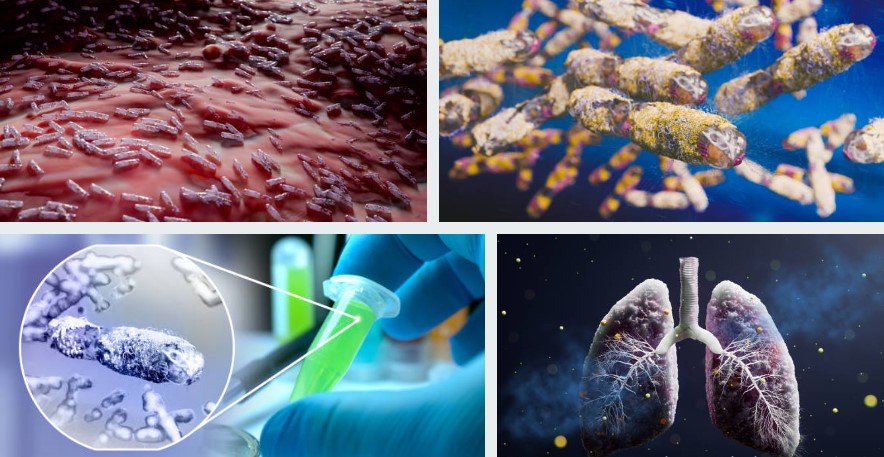


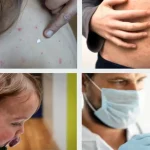





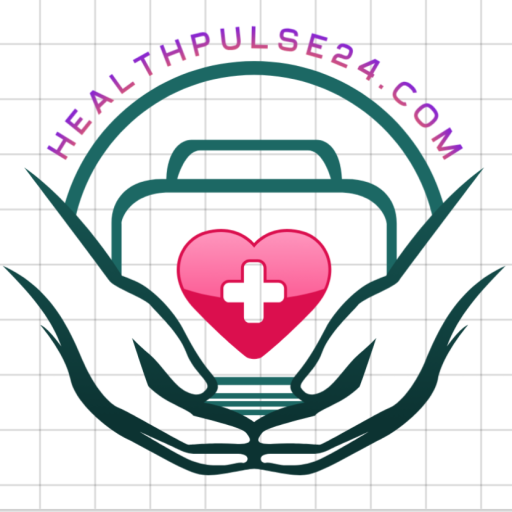
1 thought on “What is Tuberculosis? A Complete Guide to Causes, Symptoms, Diagnosis, Treatment & Prevention”